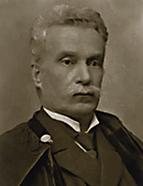

The foundations for constructing a general history of art, subjected to the only admissible approach — the comparative method of art history — seem to be found in the archives of the Torre do Tombo, as well as in the Dutch, Belgian, Roman, Florentine, Spanish, German (Nuremberg and Augsburg), and the English Royal Household archives. The design of this geographical framework reflects Portugal's historical relations with the Court of the Dukes of Burgundy, the Vatican, the Medici, the Austrian and Spanish monarchies, the two southern German centres of trade, the Renaissance movement, and the House of Lancaster. Building on the foundations laid by Raczynski, Joaquim de Vasconcelos establishes the study of Portugal's international relations in the 15th and 16th centuries as a crucial source for identifying foreign influences in Portuguese art and for demonstrating the nationalisation of some of them. In doing so, he weaves the Ariadne's thread of Portuguese artistic works. When, at the age of 28, he published his findings on the influence of the German engraver, painter, and illustrator Albrecht Dürer on the Iberian Peninsula (1877), he was able to claim that the migratory movements of merchants and the establishment of trading posts followed a pattern that enables the tracing of the influences on Portuguese art, and he argues that the circulation of works of art adhered to commercial relationships and that knowledge of international relations in the 15th and 16th centuries and of the merchant nations is crucial for an appreciation of the history of art in Portugal.
By focusing his research on these centuries, he observes that even the great period of the Discoveries has not been adequately studied in Portugal. He emphasises that the "problem of national art" (Albrecht Dürer, 1877, p. 156) should be addressed by examining the history of artistic migrations to the Iberian Peninsula through trade routes. In addition to exploring archival materials — and with a keen awareness of the development of research tools based on his own scholarly practice which leads him to describe himself as a fragment maker (Idem, p. X) — the historian soon felt the need to translate the essential textbooks for art history (Idem, p. VI). Over the years, he published a bibliography of Portuguese art (initially intended to include a universal catalogue of art books from the South Kensington Museum) as well as a bibliography of Portuguese industries.
This work is financed by national funds through FCT - Foundation for Science and Technology, I.P, in the scope of the projects UIDB/04311/2020 and UIDP/04311/2020.
